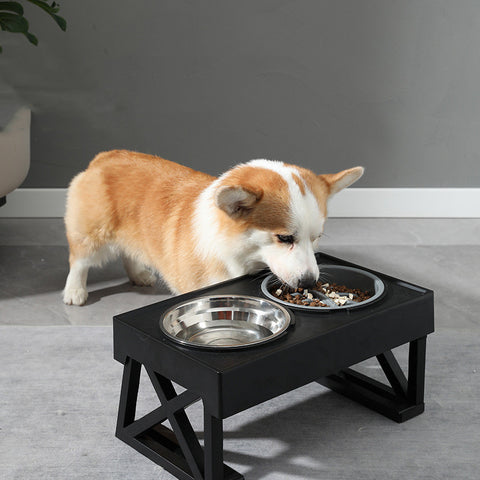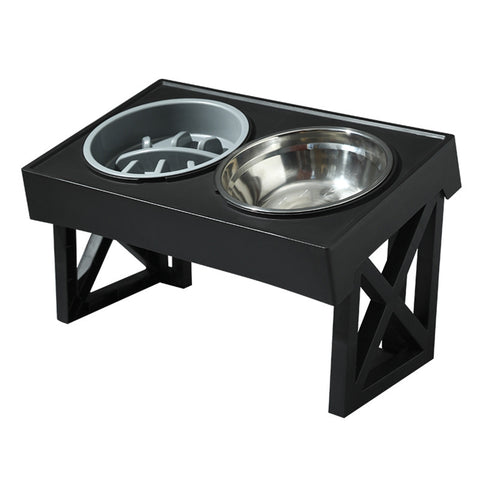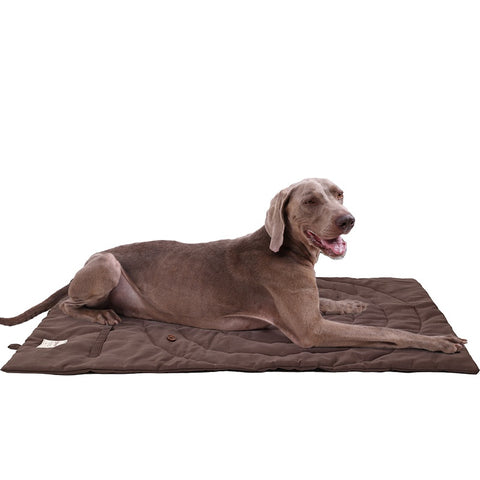As pet owners, we always want the best for our furry friends, especially in terms of their happiness and health. This is particularly true for large breeds, such as German Shepherds, who often experience back and joint problems as they age.
Elevated dog bowls are designed to be set at a height that allows dogs to eat and drink without bending down excessively. They offer a more ergonomic way to eat than standard dishes that rest flat on the ground. This tutorial will cover the potential specific needs that your German Shepherd may have, the benefits of elevated bowls, and how to select the best one for your dog.
What Kind of Bowls Are Best for German Shepherds?
Large and energetic, German Shepherds are prized for their power, loyalty, and intelligence. This breed is known for its strong jaws and propensity for fast eating, which can cause bloating and other digestive problems. Due to their long necks and strong bodies, German Shepherds benefit from feeding solutions that suit their physical build.
Regular dog bowls may not be suitable for German Shepherds due to their distinct eating habits and stature. To allow these large dogs to eat comfortably without putting undue strain on their necks or backs, elevated dog bowls are necessary. Additionally, the bowls must be bigger to accommodate more food without creating a mess. A non-slip base keeps the bowl firm as your dog eats, and a slanted shape can help keep food from getting trapped at the bottom. Last but not least, stainless steel is the ideal material to use because it's hygienic and simple to clean.

Benefits of Elevated Dog Bowls for German Shepherds
1. Improved Posture and Comfort
Better posture during mealtimes is one of the main advantages of elevated dog bowls. A German Shepherd's bending over to feed from a regular bowl can cause discomfort over time. Particularly for larger breeds, elevated dog bowls make mealtimes more comfortable by preserving a more natural alignment of the spine.
2. Easier Eating and Drinking
Food and water in low bowls might be challenging for German Shepherds to reach, especially if they have mobility problems. Elevated dog bowls solve this issue by making access easier. This convenience promotes increased nutritional intake and hydration, both of which are beneficial to general health.
3. Better Digestion
Eating from an elevated position may aid digestion by promoting a more natural swallowing posture. When dogs eat at a lower level, they may gulp their food, leading to potential digestive issues like bloating. Elevated bowls encourage a slower, more controlled eating pace, which can improve digestion.
4. Reduced Joint Stress
Joint stress becomes an issue in older dogs. Because elevated bowls require less bending and straining, they can help reduce this stress. By avoiding further strain on their joints, older German Shepherds or those with past injuries might greatly benefit from the use of an elevated dog bowl.
5. Hygienic Eating Environment
Elevated dog bowls sit higher off the ground, which helps reduce the chances of food and water coming into contact with dust, bugs, and other contaminants. This keeps the eating area cleaner and creates a more hygienic environment for your dog.
What to Look for in an Elevated Bowl for Your German Shepherd
1. Find the Perfect Height
An elevated dog bowl should be about 6 to 10 centimeters (2 to 4 inches) below your dog's shoulders. This prevents strain from bending too low or reaching too high when eating, allowing your German Shepherd to eat with a natural neck posture. Measure your dog's shoulder height when they are standing to get the ideal bowl height. The recommended bowl height for adult German Shepherds is usually between 14 and 22 inches, or 35 to 55 centimeters

2. Look for Durable Material
The ideal option is stainless steel for a number of reasons. They keep your dog healthy because they are highly antimicrobial and simple to clean. Since they can't be chewed on or broken like other materials can, they won't collect smells and will stay in good shape over time.
3. Consider Stable Features
A secure bowl is essential to avoid accidents and mess, particularly with large, active dogs such as German Shepherds. When shopping for elevated bowls for your dog, seek for ones with non-slip bases or weighted designs to provide stability.
These characteristics lessen the chance of the bowl toppling over and help hold it in place. Selecting a model with a broad, robust base can also offer additional support, improving mealtime enjoyment and minimizing clutter for both you and your dog.
Recommended Types of Elevated Dog Bowls
Adjustable Height Bowls
Dog bowls with adjustable heights are especially useful for developing puppies. You can adjust these bowls to fit changing heights, so your dog can eat in a comfortable position throughout their life stages.
Fixed Height Bowls
For mature German Shepherds, bowls with a set height could be adequate. To make sure the dish is at the right height for your dog, it's important to take an accurate height measurement. A lot of bowls with set heights are available in different sizes to suit different breeds.
Multi-Bowl Systems
For those who prefer to offer their dog fresh water alongside meals, multi-bowl systems with separate sections for food and water are a convenient solution.
Support Your German Shepherd with an Elevated Dog Bowl!
Your German Shepherd's feeding habits, comfort level, and general health can all be significantly enhanced by selecting the ideal elevated dog dish. As you assist them acclimate to the new bowl, take your time and observe how they do. Purchasing a raised dish is an investment in your dog's well-being, not only for feeding. By carefully considering their needs and supporting them through the transition, you're contributing to their overall happiness!

FAQs:
-
How do I know if my German Shepherd needs an elevated bowl?
If your German Shepherd struggles to eat from a standard bowl due to their height, age, or any mobility issues, it may be time to consider an elevated bowl. Look for signs like discomfort while eating, frequent bending or straining, or digestive issues such as bloating.
-
How do I help my dog adjust to an elevated bowl?
Transitioning to an elevated bowl should be done gradually. Start by placing the elevated bowl next to the old bowl and encourage your dog to explore it. You may need to coax them using treats or their favorite food initially. Monitor your dog's behavior closely, watching for any signs of discomfort or hesitance. Adjust the height if necessary and give them time to adapt to the new setup.
-
Are elevated bowls suitable for all German Shepherds?
While elevated bowls are generally beneficial, not all German Shepherds may need them. Puppies and older dogs with specific health issues, such as arthritis or hip dysplasia, might require special considerations. It's essential to evaluate your dog's individual needs before deciding on an elevated bowl.
